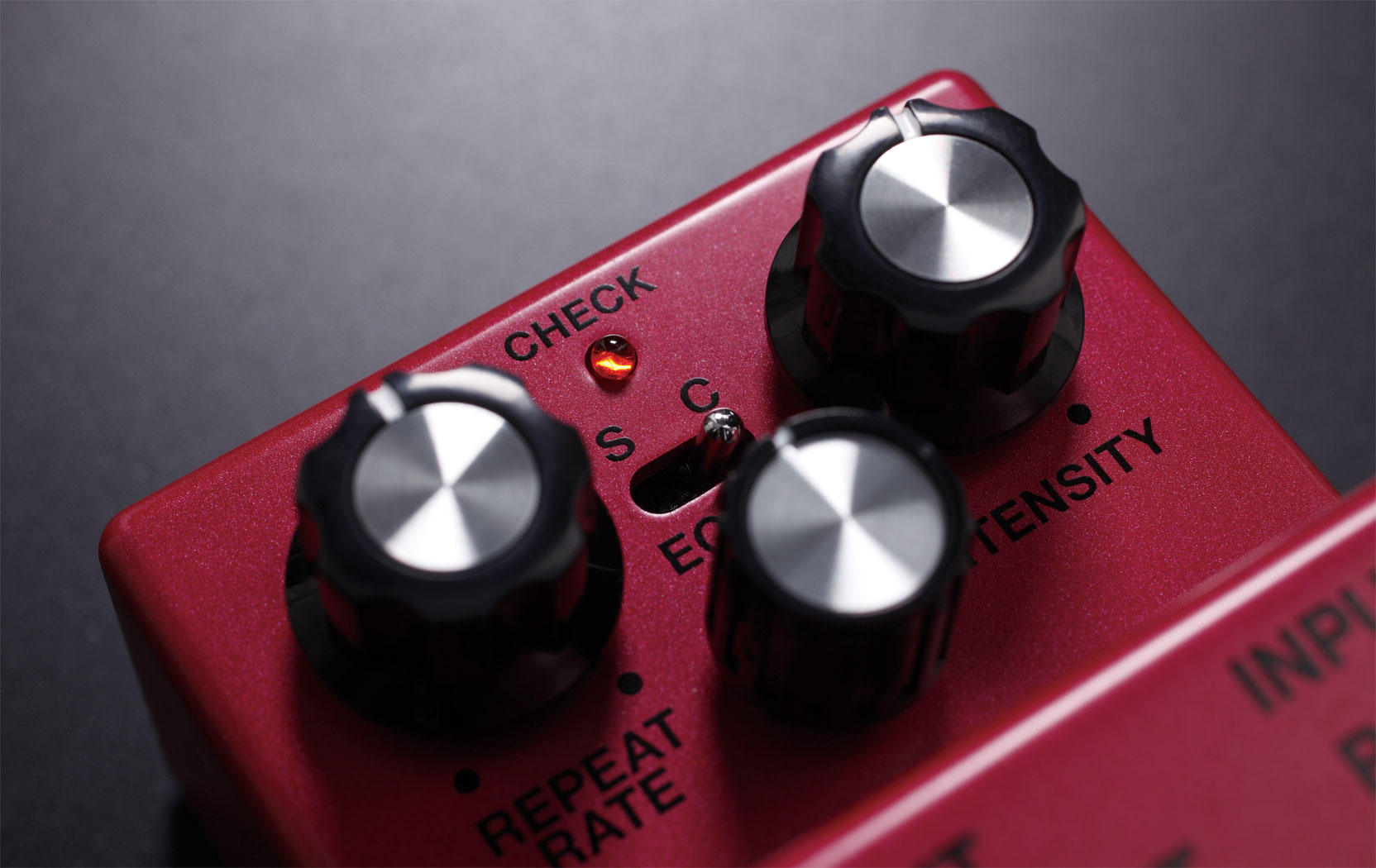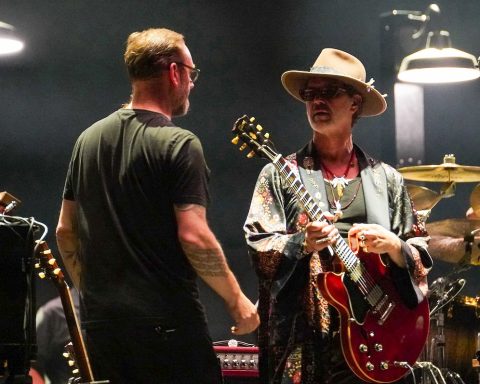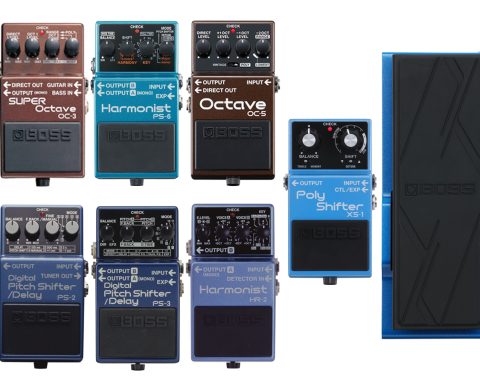Few effects types have impacted the guitar world in as many unique ways as the delay pedal. Whether the fast slapback of rockabilly and country, the rhythmic echoes of ’80s solos, or the ethereal soundscapes of post-rock epics, the delay pedal is one of modern guitar playing’s defining features. BOSS and Roland have been right at the heart of that for 50 years. The legacy began with the Roland Space Echo, introduced in 1974, and continued in 1978 with the first delay stomp box, the DM-1 Delay Machine. That lineage continues today, with an entire range of digital and analog delay options for every possible application and type of musician.
How Delay Pedals Work
At their core, delay pedals are a simple concept. When the guitar signal passes through the pedal, it gets repeated at a delayed interval alongside real-time playing. The repeat then continues at a chosen interval a set amount of times, fading in volume as it does so.
Playback speed alters the effect of the pedal. A short delay time results in a slapback, echo-type sound, not dissimilar from natural reverb. A long delay time results in a more spacious, ethereal, dream-like effect.
Popular Artists
The delay pedal has been a defining effect type for modern music, shaping the sound of countless musicians and their material. From Chet Atkins’ “Blue Ocean Echo” to U2’s “Where The Streets Have No Name,” few pedals have had as much impact on music in as many different ways.
Listen to the bouncing swells of “Cathedral” by Eddie Van Halen or the hard-panned 8th-note pulse of Nile Rodgers’ stabs on David Bowie’s “Let’s Dance.” Then try the creamy echoes of Eric Johnson’s epic “Cliffs of Dover.” Delay knows no boundaries.
Delay Types
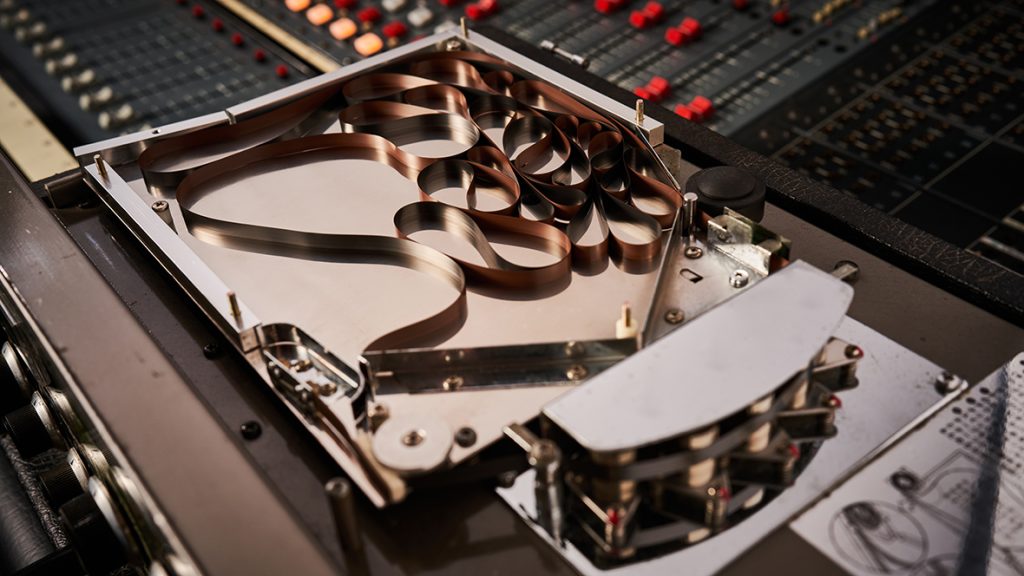
Tape Delay
For an effect with so many applications and capabilities, there is a broad range of variations under the umbrella term delay pedal. Tape delay is where it all began with a literal spool of tape running, recording, and getting dubbed over quickly to create an echo effect.
The parameters of a tape delay were rudimentary, and its application limited. However, stylistically the vintage tone of a tape delay has become a hallmark of ’60s rock and pop. These days there is a tape delay simulation mode on the RE-2, RE-202, and DD series that evokes that classic tone.

Analog Delay
Analog delay is another traditional delay type. Originally introduced as a compact, modern, and reliable alternative to a tape delay, analog delay utilizes a special BBD chip. This chip sends the signal through several capacitors to achieve its repeated sound.
Like tape delay, it has limited parameters and is difficult to control accurately. Still, the warm traditional character of analog delay pedal like the DM-2W makes it a popular effects type.
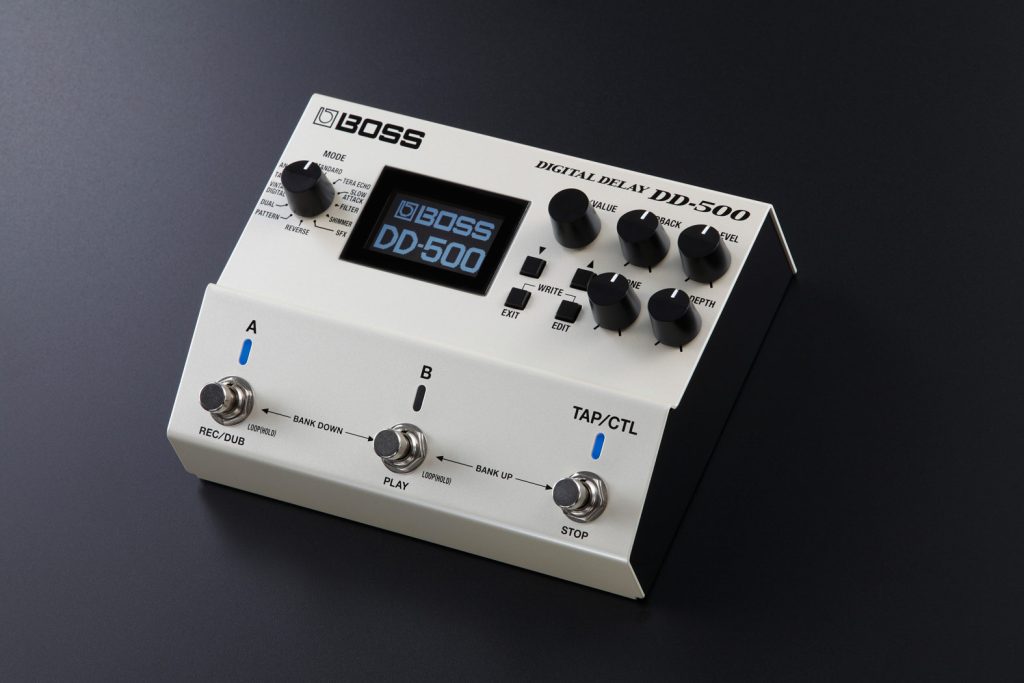
"Tap tempo, controllable divisions, and accurate playback intervals make digital delay ideal for performances."
Digital Delay
Digital delay is the modern evolution of the delay effect. Indeed, digital control allows a much higher level of precision, a desirable trait for a time-based effect. The milliseconds with which we measure delay playback can be much more specific and have a broader spectrum to work. This results in shorter, faster slapback for a guitar doubling type effect and longer delay times for rudimentary looping.
Tap tempo, controllable divisions, and accurate playback intervals make digital delay pedals like the DD-8 or DD-500 ideal for performances. When playing with other musicians, one can tailor delay times to the BPM of the music. Digital delay also has clearer tails. This means, unlike analog delay, the echoes of the repeated part can dip in volume as they fade out without a loss of treble frequencies.
Five Delay Pedal Uses
1. Slapback for Vintage Tone
Slapback is one of the original applications for the delay pedal. It adds an authentic richness to guitar tone by thickening it and adding a sense of space, character, and simulated reverb.
To achieve a slapback style tone, set a short delay time, so the repeated note occurs immediately after the original. Keep the repeat rate low, so each played note gets followed by a single reverberating echo rather than a cascading echo. Voila: vintage sound all wrapped up in a bow.
"Slapback adds an authentic richness to guitar tone by thickening it and adding a sense of space, character, and simulated reverb."
2. Reverse Delay for Soundscapes
Reverse delay is a perfect partner for those looking to make a more ambient soundscape with their guitar. The reversed notes give an otherworldly swell to repeats. Also, the disconnect between their sound and guitar playing allows more freedom to play over the repetitions. A long echo on a delay pedal can often clash with a guitar line if one isn’t careful. The reversed sound offers more separation and creates an outer space-like reverb swell beneath the playing.
3. Octave Delay for Futuristic Sounds
Often called shimmer, octave delay is a quick set of repeats that move up an octave for each repetition. This effect type has become incredibly popular over the last decade and has been a defining feature of genres like math and post-rock.
The approach is perfect for tremolo picking or turning held chords into massive cascading soundscapes. Like reverse delay, this isn’t a delay setting to be especially mathematical about. Octave delay responds like a reverb, offering presence and character to guitar playing.
"Often called shimmer, octave delay is a quick set of repeats that move up an octave for each repetition."
4. Playing the Pedal for Musical Control
Remember, a delay pedal can be very musical on its own. Manipulating feedback and time control in opposing directions can create wild results. Done carefully, a player can grab the note of a repeat and use the time control to shift its pitch, dive-bombing the note or sending it squealing up high. Keep an eye on the feedback control to avoid a feedback loop.
5. Glitch Delay for Stuttered Madness
Using a delay pedal to stutter a note is a lot of fun. It’s unique, unusual, and an effect type used to great effect by players like Nick Reinhart of Tera Melos. One can achieve this type of delay with the specific GLT mode on the DD-8 or by keeping the delay time short and the repeat rate high. However, this will quickly create a feedback loop, so use the effect sparingly. Turn it on and off in intervals to create a guitar line stutter.
"Delay can be a beautiful beast, oscillating and pitch shifting, turning the guitar into something out of this world."
A Versatile Companion
Versatility is at the core of the delay pedal. It’s one of the most versatile, creative tools a guitarist can add to a pedalboard. It can be a subtle enhancement to a tone, embedding players in the mix and adding weight and presence. Alternatively, it can be a beautiful beast, oscillating and pitch shifting, turning the guitar into something out of this world. So, don’t delay—the moment to experiment with this dynamic effect is now.
